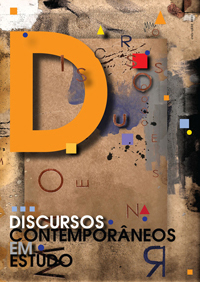O blogue corporativo como representação empresarial
DOI:
https://doi.org/10.26512/discursos.v1i1.0/8276Keywords:
Representations. Transitivity. Representation structures. Multimodality.Abstract
New multimodal tools connected to Internet, such as websites and corporate blogs, have multiplied in the business universe, due to changes in the communication paradigm. The aim of this article is to analyze multimodal representations in the blog of a Portuguese company group. We intend to
analyze verbal and visual choices in order to understand how this company group is represented. To accomplish this objective, we follow Systemic Functional Linguistics (HALLIDAY, 1994, 2004) and Social Semiotics principles (KRESS; van LEEUWEN, 1996, 2006) applied to business discourse. The analytical tools are focused on Halliday's transitivity system and on the structures of visual representation of Visual Grammar. The main results of this analysis show that, although the objective of interactivity inherent to this textual genre is not achieved, this blog represents the company group in bringing together different resources and genres. We conclude that it has an internal and external mission, representing, on one hand, the company group as an entity with
animated and human characteristics roughly linked to the quality and the environment, and, on the other, through its attributes.
Downloads
References
DUGAN, K. Emerging corporate blog models. Strategic public relations ”“ focused on strategy within integrated marketing communication. Disponível em: <http://prblog.typepad.com/strategic_public_relation/2004/11/emerging_corpor.htmla>. Acedido em:. 12 Dez 2009.
FLYNN, N. Blog rules: a business guide to managing policy, public relations and legal issues. New York: AMACOM, 2006.
HALLIDAY, M. A. K. An introduction to functional grammar. 2. ed., London: Edward Arnold, 1994.
HALLIDAY, M. A. K.; MATTHIESSEN, C. M. I. M. An introduction to functional grammar. 3. ed. London: Hodder Arnold, 2004.
KRESS, G.; van LEEUWEN, T. Multimodal discourse: the modes and media of contemporary communication. London: Arnold, 2006.
KRESS, G.; van LEEUWEN, T. Reading images. 2. ed. London: Routledge, 2006.
ROSE, G. Visual methologies: an introduction to the interpretation of visual materials. London: Sage, 2007.
SIMONIS, L. The new rules of business blogs. Disponível em: http://www.positioningstrategy.com/ebooks/new_Rules_Of_Business_Blogs.pdf, 2008>. Acedido em: 22 Fev 2010.
STAUFFER, T. Blog on: building online communities with web logs. McGraw-Hill, 2002.
WACKA, F. Corporate blog: a short definition. Your guide to corporate blooging info: archive. Disponível em:<http://www.corporateblogging.info/2004/06/corporate-blog-short-definition.asp>. Acedido em: 20 jan 2010.
WACKA, F. Beginners' guide to corporate blogging. Disponível em: http://www.corporateblogging.info/basics/corporatebloggingprimer.pdf>. Acedido em: 15 nov 2005.
MA, Shanshan; QUIPING, Zhang. A study on content and management style of corporate blogs. SCHULER, Douglas (ed.). Online Communities and Social Computing Second International Conference (OCSC), 2007 HCI International, 2007.
Downloads
How to Cite
Issue
Section
License
Autores que publicam nesta revista concordam com os seguintes termos:
a) Os(as) autores(as) mantêm os direitos autorais e concedem à revista o direito de primeira publicação, sendo o trabalho simultaneamente licenciado sob a Creative Commons Attribution License o que permite o compartilhamento do trabalho com reconhecimento da autoria do trabalho e publicação inicial nesta revista.
b) Os(as) autores(as) têm autorização para assumir contratos adicionais separadamente, para distribuição não-exclusiva da versão do trabalho publicada nesta revista (ex.: publicar em repositório institucional ou como capítulo de livro), com reconhecimento de autoria e publicação inicial nesta revista.
c) Autores têm permissão e são estimulados a publicar e distribuir seu trabalho on-line (ex.: em repositórios institucionais ou na sua página pessoal) após o processo editorial, já que isso pode gerar alterações produtivas, bem como aumentar o impacto e a citação do trabalho publicado (Veja O Efeito do Acesso Livre).
d) Os(as) autores(as) dos trabalhos aprovados autorizam a revista a, após a publicação, ceder seu conteúdo para reprodução em indexadores de conteúdo, bibliotecas virtuais e similares.
e) Os(as) autores(as) assumem que os textos submetidos à publicação são de sua criação original, responsabilizando-se inteiramente por seu conteúdo em caso de eventual impugnação por parte de terceiros.




